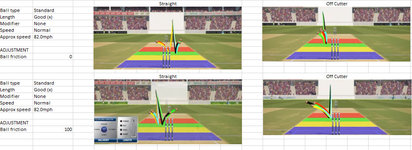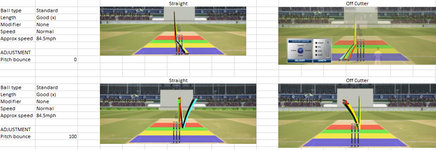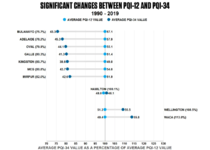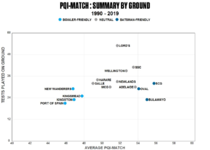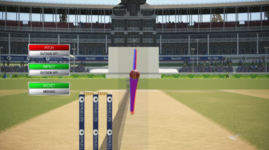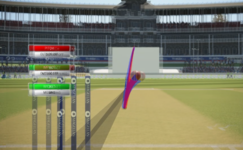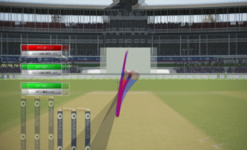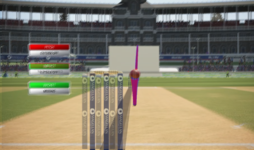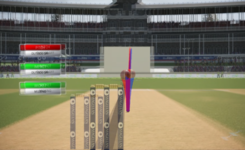I spent a chuck of time this morning having a proper delve into Ashes sliders. I noticed from a Cricket 19 gameplay video someone posted that the exact same physics sliders are in that game as Ashes, though no way to know if they've been tweaked in terms of how they affect game play.
Below are a number of comparisons to analyse various sliders. The method was always to bowl one ball on default, two balls on one setting, two balls on another setting, then see how they 5 deliveries stacked up.
For reference, I've set up a user testing team with 4 identical Jimmy Anderson's to bowl pace, and 2 identical Moeen Ali's. I'm also bowling against a full AI team of right handers, just to keep things constant. The ground is once again the on-disk Old Trafford, the pitch is dry and soft.
Some sliders provided fairly obvious data, some provided highly puzzling data indeed! Strap in for another long and winding update lolz
On the fairly obvious side:
Spin Bowling Revs

Easy one. No real discernible difference to ball speed side on, and the 100 rev setting (green and yellow), move the most. The black default ball can be seen pitching, and finishes just on the top of leg stump, so a straighter line than green and yellow for a similar end point.
The 0 setting (red and blue) literally don't deviate at all. No real difference in bounce. All very expected. Turn the spin up, the ball spins more. Turn spin off, the ball doesn't spin. Leave it in the middle, well, you get the idea.
More puzzling data was mainly around friction. Both ball and pitch, and for both spin and pace.
Pitch friction + 100 spin revs

With full spin revs (100/100), a 0 pitch friction setting (red & blue) a default 50 setting (black) and a 100 setting (green and yellow), all five balls are pretty much identical. The only difference that can really be seen is that the 100 setting balls are slightly quicker off the pitch. No influence on degrees of turn at all.
Ball friction + 100 spin revs

Again, a slight difference in speed, but in terms of turn, there's very little difference between a ball friction setting of 0, 50 or 100.
Before I moved on, I wanted to see what the relationship might be between pitch friction, ball friction and spin, and if either was more effective in generating turn.
Pitch friction, ball friction + 100 rev spin

With a constant setting of 100 spin revs, default (50 for pitch and ball friction), 100 for pitch friction and 50 for ball friction and then 100 for ball friction and 50 for pitch friction all provide pretty much the same level of turn. That seems odd to me. It is surprising that there's no obviouscorrelation there between those 3 sliders.
I had a look to see what else friction could effect (
phnar phnar!)
Pitch friction + pace

I expected friction to have a much greater effect on the speed of the ball off the pitch and really, there was just no difference on a min, max or default setting. This was a standard, good length ball by Jimmy Anderson. No change of bounce, either.
Ball friction + pace

Same deal. A min, max or default setting has no real effect on the speed a ball comes off the pitch, and it doesn't change the bounce either. Also odd.
Ball friction, pitch friction and pace revs

I didn't observe much difference between friction with spin revs, but there's a bit more to go on with regards to friction and pace revs (i.e. cutters).
Ball friction appeared to make cutters move a little more than pitch friction, and both ball and pitch friction slowed a delivery up off the pitch a bit more than a 50/50 default split.
I'm going to disappear off and take a proper look at these comparisons and see what else I can glean from them that might be useful when putting slider sets together.
I may also take a look at replicating some of these comparisons on different types of pitches to see if they provide the same results.
I've still got two weeks to kill until release date, after all :-D





